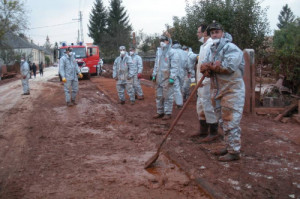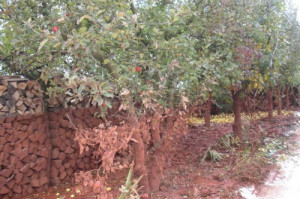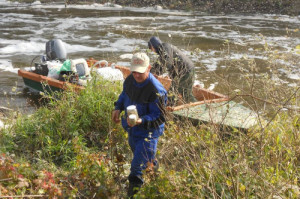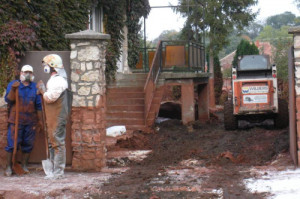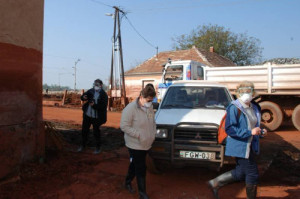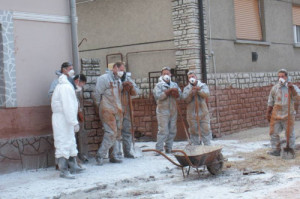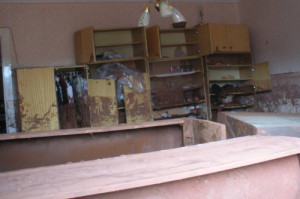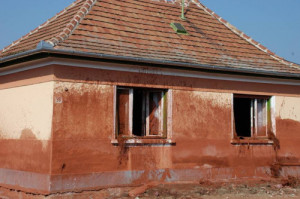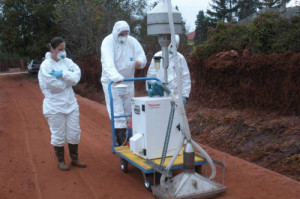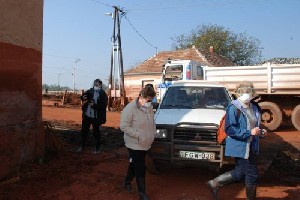Around noon, a red sludge basin at an aluminium production site employing some 1,200 personnel broke over a 50-m length, releasing 1 million m³ of highly basic sludge; 10 people were killed and another 286 injured (due to chemical burns and ocular irritation), of whom 121 had to be hospitalised. A total of 284 residences were destroyed and 400 evacuees had to be housed as an emergency measure.
According to the site operator, this sludge contained: 40% to 45% Fe2O3, which was responsible for its red colour; 10-15% Al2O3; 10-15% SiO2; 6-10% CaO; 4-5% TiO2; and 5-6% Na2O. Moreover, a liquid phase at pH 13 was found, representing 30% of the contents by mass. The Hungarian Academy of Sciences also identified traces of cadmium, chromium, mercury, nickel, lead, arsenic and zinc.
The Hungarian government ordered the plant to be closed, in addition to declaring a state of emergency in 3 of the country’s 19 departmental jurisdictions and prohibiting the use of wells, the practice of fishing and hunting, and the consumption of plants and vegetables. According to the Hungarian Interior Minister, the underground water reservoirs were not polluted.
500 members of the police and military forces, wearing appropriate protective gear, cleaned the streets using pressurised water. 23,500 tonnes of gypsum along with 1,800 m³ of acetic acid were poured into the streams in order to lower the pH reading; the construction of 7 artificial dams facilitated the deposition of suspended effluent. The ecosystems of the TORNA and then the MARCAL Rivers were completely destroyed. The countries bordering the DANUBE River were notified on the morning of 5 October; outside of a limited number of dead fish in Komarno (at the confluence of the MARCAL and DANUBE), no noteworthy impact was detected downstream in either Hungary or any of the neighbouring countries.
On 7 October, the leak was sealed, but two days later a village of 1,000 population had to be evacuated and another 5,400 nearby residents were placed on a state of alert following the appearance of a new leak on the effluent basin. A protective dyke was built between the 9th and 12th of October. On this same day, the plant was nationalised; production resumed on 14th October.
On the 21st of October, the World Health Organisation (WHO) recommended medical monitoring for the 4,000 rescue workers who responded to the emergency call in addition to the cleaning of sludge by specialised subcontractors, for the purpose of avoiding any risks of wider dissemination into the air after drying. The WHO also requested a continuous monitoring campaign dedicated to surface water, air, soils and farm products, so as to evaluate the long-term risks associated with heavy metals being transported by sludge.
1,000 ha of stripped topsoil over a 2-cm depth were allocated to producing biofuels. A dry storage process was implemented inside the plant. All of the country’s mining deposits were inspected and their monitoring patterns were clarified.
In its official announcements, the Hungarian government noted an excessive filling of the basins. An NGO circulated photographs dating from June 2010 showing a leak. Local residents filed a class action suit against the operator, who had not drawn up any emergency plans. The operator denied all liability and cited the unusually high quantity of rain that fell during 2010.
According to another environmental NGO, the banks of the DANUBE encompass a good number of waste retention sites in widely varying states of maintenance. In 2000, two accidents, in Baia Mare (ARIA 17265) and Bucharest (ARIA 17425), led to cross-border pollution of both the TISZA and DANUBE Rivers.
Download the detailed report in .pdf format (2.1 Mb)



